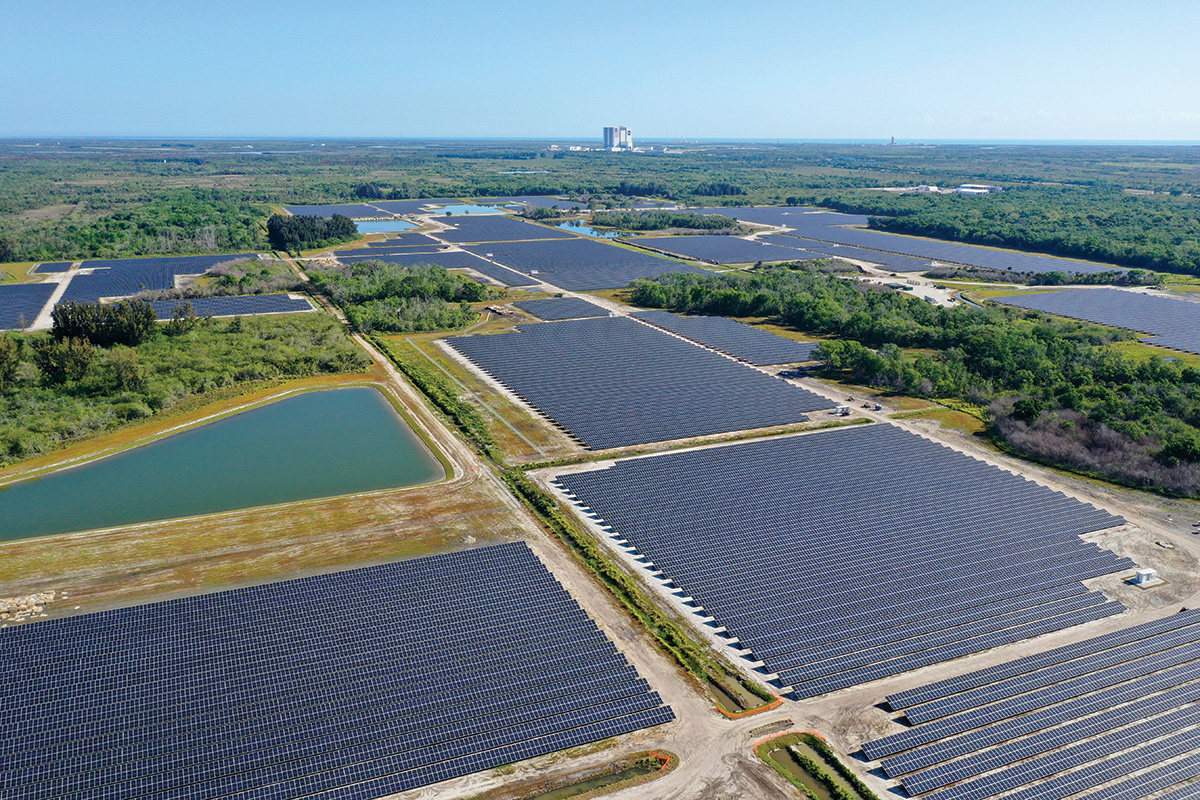By 2030, utility solar power plants will cover approximately 273,337 acres of Florida, or 427 square miles, well more than the land area of Pinellas County and closing in on Hernando.
To get that estimate, Florida Trend tallied all the forecasted solar projects in each utility’s 10-year site plan filed with the state Public Service Commission. Florida Power & Light is by far the hungriest. At 634 acres a site — the average of the next 28 sites FPL forecasts opening — it would need to add 148,356 acres over 234 sites to meet its solar power goals through 2034.
Solar’s appetite has implications for Florida’s economy, from power prices, reliability and availability to deforestation, timberland values and the state’s character.
Nationally, the most land-hungry of power sources will pass coal in 2026 in generation market share, according to the U.S. Energy Information Administration, and continue growing as demand grows from electric vehicles and the city-scale power needs of AI and data centers. With abundant flat land and sunshine, Florida and the rest of the Southeast U.S. will remain attractive to power companies and timber landowners who find solar leases more profitable than raising loblolly pine. Mark McHugh, CEO of Wildlight-based timberland company Rayonier, has said its acreage under option for solar reached 39,900 at year-end 2024, up from 7,000 acres in 2021. However, in some parts of the Southeast U.S., residents and communities have pushed back on solar development over concerns about aesthetics, cleanup costs and tax incentives.
John Ketchum, CEO of FPL parent NextEra Energy, told investors earlier this year that electricity demand in the U.S. is “unlike anything we’ve ever seen since the end of World War II.” He described renewables and battery storage — the lowest-cost form for generation and capacity, he says — as a “critical bridge” to other technology such as gas-fired plants, the development of which has been hampered by gas turbine shortages and a shortage of skilled labor. Small modular nuclear reactor “technology is still 10 years away at scale in the best of scenarios and at a much higher price point than gas-fired generation,” he said. “America is going to need all forms of energy to meet this enormous demand.”
FPL turns 100 this year. Ketchum says FPL added more than 1.3 million customers in the last 20 years. He expects it to add 335,000 customer accounts through 2029.













